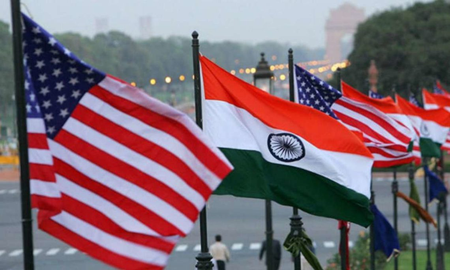New Delhi: India has toughened its stance on extending duty concessions on agri products, dairy and GM foods in the proposed bilateral trade agreement (BTA) with the US.
With the US not able to finalise a deal with India so far, US President Donald Trump Thursday announced imposition of an additional 25 per cent import duty on Indian goods entering American markets from August 7.
Earlier, this duty was to be imposed from August 1. The President has also not specified the penalty which he has announced on India for buying crude oil and military equipment from Russia.
Here is a list of Q&A (questions and answers) to explain reasons behind India’s stand and impact of US tariffs on labour-intensive sectors:
What is the India-US bilateral trade agreement (BTA)?
India and the US entered into negotiations for a fair, balanced and mutually beneficial BTA in March 2025 with a target to complete the first tranche/phase of the pact by fall (October-November) of 2025.
So far, five rounds of talks have been completed. For the next round, the US team, headed by Assistant US Trade Representative for South and Central Asia Brendan Lynch, is visiting India from August 25.
What is the aim of the BTA?
Normally in a trade agreement, two trading partners either significantly reduce or eliminate import duties on the maximum number of goods traded between them. Besides, they ease norms to promote trade in services and increase two-way investments.
The India-US BTA is aimed at more than doubling the bilateral trade to USD 500 billion by 2030 from the present USD 191 billion.
What are the major demands of the two countries from each other in the BTA?
The US wants duty concessions on certain industrial goods, automobiles, especially electric vehicles, wines, petrochemical products, agri goods, dairy items, apples, tree nuts, and genetically-modified crops.
India is seeking the removal of this additional tariff (25 per cent now) and cut in tariffs on steel and aluminium (50 per cent), auto sector (25 per cent), labour-intensive sectors, such as textiles, gems and jewellery, leather goods, garments, plastics, chemicals, shrimp, oil seeds, grapes, and bananas.
How much tariff is imposed by the US on Indian goods at present?
India’s average import duty is about 17 per cent, while the US’ is 3.3 per cent. On April 2, the US announced to impose 26 per cent duty (16 per cent reciprocal tariff and 10 per cent baseline tariff). At present, only the baseline tariff is in force. It is over and above the existing import duty on Indian goods.
For example, before April 2, the Indian textiles were attracting a 6-9 per cent tariff in America. With the baseline tariff, it rose to 16-19 per cent. But from August 7, the sector will attract a 31-34 per cent duty. The baseline tariff will be replaced by 25 per cent duty notified on July 31 by the White House.
However, certain products are exempted from these tariffs such as pharmaceutical, electronics and energy products.
From when the 25 per cent duty will come into force?
The duty, announced this week, will come into force from August 7 (9.30 am IST). The executive order has also clarified that goods in transit until October 5, 12:01 am eastern daylight time (EDT), or 09:30 am IST, will be subject to a 10 per cent tariff, provided that such goods have entered into transit before August 7 12:01 am EDT.
Why India is not ready to provide duty concessions on dairy, agri and GM foods?
Agri: Farm livelihoods are at stake. This is a politically and economically sensitive area as over 700 million people in India’s rural economy are dependent on the sector. If India removes tariffs, cheap, subsidised US grains could flood Indian markets during global price crashes.
Unlike the US, where agriculture is corporatised, Indian farming is a livelihood issue. Tariffs are essential to protect small farmers, manage price volatility, and ensure food security.
Dairy: India wants to safeguard its small farmers. GTRI stated that the US argues that India’s GM-free feed certification and facility registration protocols effectively bar American dairy imports.
“Indian rules prohibit imports from animals fed with animal-derived feed’?for example, butter from a cow fed meat’?due to religious sensitivities. India considers this policy non-negotiable,” GTRI has said.
GM Food: These are created by inserting specific genes, often from bacteria, viruses, other plants, or occasionally animals, into a plant’s DNA to introduce new traits, such as pest resistance or herbicide tolerance.
Allowing the import of GM products such as soybean meal and distillers dried grains with solubles (DDGS) for animal feed would affect India’s agricultural exports to the EU, a key destination for Indian exporters.
PTI
